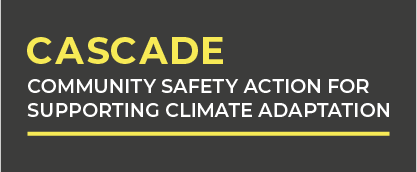CASCADE addresses the challenges related to climate change risks, with better cooperation between national and local levels and different sectors. Close collaboration between specialists in climate change adaption and well-prepared civil security and protection experts is CASCADE’s answer to climate change related consequences. Nine partners representing seven Baltic Sea Region countries are involved in the project. The materials and results of CASCADE are replicable for all Baltic Sea Region countries.
Overview on the climate change related hazards with different consequences
A draft report describing the climate risk drivers, hazards, and consequences in the Baltic Sea Region has just been published in the project. This report is a useful reference for understanding the links between potential drivers, hazards, and their potential impacts of climate change - direct, indirect and even cascading - on society.
Climate risks are a result of climate related hazards, vulnerability and societal exposure.
The main drivers of climate related hazards include:
- temperature change
- precipitation intensity
- windstorms
- sea-level rise
- salinity
- water temperature
Climate change related hazards are events which have a variety of direct and indirect consequences for society. Hazards impact the environment, human health and wellbeing, as well as our physical assets, such as critical infrastructure. The risk that these hazards present to society depend not only on the hazard, but also on how our society is organised. The impacts can be far reaching in our local communities, but also across the globe. For example, the effects of hazard events such as forest fires and storms, can travel across borders. Due to global interconnectedness and interdependencies in e.g. food and supply chains, and financial markets, effects can even be felt across the globe.
Based on a desk review, the report collects local examples, where possible, to illustrate the cascading consequences of climate hazards for the region. It also assesses the extent to which climate related hazards – past and future projections - are included in National Risk Assessments or similar documents for the Baltic Sea region.
Read the overview here.
The overview will undergo testing and modifications along with other project outputs. Further content may be added to it in the duration of the project.
-----
This report is prepared by SEI Tallinn as a part of the Development of Guidelines on Integrated Climate Change and Disaster Risk Response Management Work Package (WP2) of the CASCADE project. The main objective of WP2 is to develop guidelines for local level public administration to achieve a common understanding, integrated and complex approach to risk management measures with the inclusion of climate change adaptation aspects.
